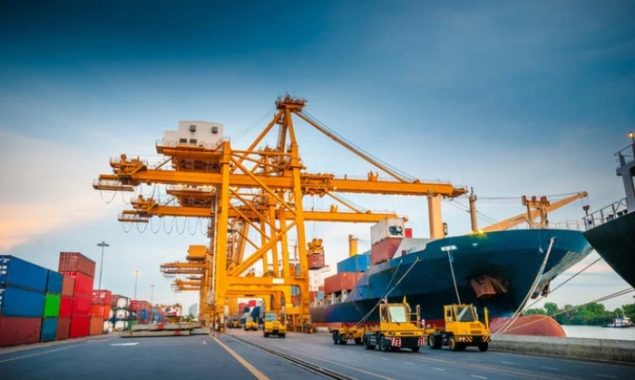
The trade surplus of the Euro area steeply shrank to EUR4.8 billion in August, compared with EUR20.7 billion in the previous month. This was mainly driven by a 26.6 per cent surge in imports as energy prices rose, Arab News quoted Eurostat data.
In particular, imports of fuels and lubricants soared by 84.4 per cent year-on-year. Imports of crude materials also grew significantly in August, rising by a yearly rate of 65.4 per cent.
In addition, imports from Russia and the United States rose noticeably as they jumped by yearly rates of 107.1 per cent and 18.4 per cent respectively.
Global inflation risks
Following elimination of the pandemic-related restrictions, a rising global demand has been met with supply shortages all over the world. The Wall Street Journal reported that surging costs for energy and raw materials are the result of this clash.
While more than a dozen central banks have raised their interest rates, two of the most influential, the Federal Reserve and the European Central Bank, are yet to raise their rates.
This likely means that different central banks have different views over the current inflationary fears. Some predict it to be temporary and will gradually taper off; others expect that it will feed into even more inflationary pressures and thus act accordingly with a contractionary monetary policy.
Italy’s growth forecasts
Italy’s business lobby, Confindustria, has favourably revised its growth outlook for the country. The lobby’s research unit now forecasts the economy to grow by 6.1 per cent this year and 4.1 per cent in 2022.
In April, the forecast for 2021 was a lower 4.1 per cent. This means that GDP will be above pre-pandemic levels in the first half of 2022. Limited impact of the Delta variant and robust economic indicators were cited as reasons for this revision.
European inflation
Official data showed that France’s consumer price inflation rate recorded its highest rate since October 2018, as it increased to 2.2 per cent year-on-year in September, higher than last month’s 1.9 per cent. Energy costs had the highest jump, growing by 14.9 per cent.
Moreover, according to Italy’s National Institute of Statistics, the country’s yearly inflation rate rose to 2.5 per cent in September 2021, rising from 2% in August. Higher energy costs drove this increase as they rose by 20.2 per cent. This is the highest inflation rate since November 2012.
However, Italian consumer prices declined by 0.2 per cent month-on-month compared to a 0.4 per cent rise in August.
Indonesian balance of trade
In the 17th straight month of continued trade surplus, Indonesia’s surplus expanded from $2.4 billion in September 2020 to $4.4 billion in this year’s September, data from Statistics Indonesia showed.
This was mainly due to significantly high export growth, as it increased by a yearly rate of 47.6 per cent due to larger oil and non-oil exports.
Imports also surged, albeit at a slightly slower pace, growing by 40.3 per cent. Oil and gas imports soared by 59.2 per cent while purchases of non-oil and gas rose by 38.2 per cent.
Read More News On
Catch all the Business News, Breaking News Event and Latest News Updates on The BOL News
Download The BOL News App to get the Daily News Update & Follow us on Google News.




